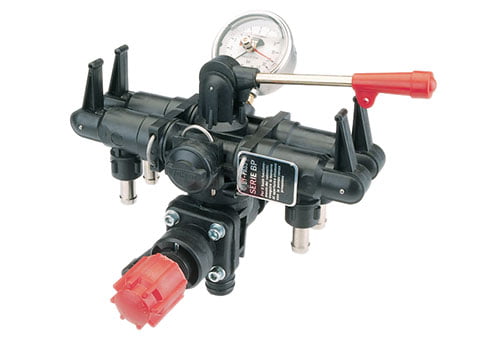Achieve Seamless Assimilation and Control With High Quality Building Automation Controls
In the world of contemporary building monitoring, the relevance of quality structure automation controls can not be overemphasized. As modern technology proceeds to development, the combination and control of different systems within a building have developed to be a lot more reliable and advanced. The seamless operation and tracking of illumination, HVAC, security, and various other building functions have actually come to be vital for enhancing passenger comfort, energy effectiveness, and total functional performance. The trip in the direction of achieving real assimilation and control is a multifaceted one, with factors to consider varying from system compatibility to cybersecurity. Embracing high quality structure automation controls is not just a matter of comfort yet a tactical critical for organizations aiming to enhance their facilities' performance and sustainability.

Evolution of Structure Automation Controls
Throughout the past couple of decades, the evolution of constructing automation controls has considerably transformed the method structures are handled and run. At first, building automation systems mostly concentrated on fundamental functions such as managing air, ventilation, and heating conditioning (HVAC) systems. As modern technology advanced, these controls have ended up being extra sophisticated, permitting for a wider variety of building systems to be incorporated and taken care of centrally.
The advancement of developing automation controls has actually seen a shift in the direction of even more intelligent systems that can adjust to altering problems in real-time. This flexibility is vital for enhancing energy performance and ensuring owner convenience. In addition, modern-day building automation controls currently supply attributes such as anticipating upkeep, remote surveillance, and information analytics, making it possible for center supervisors to make data-driven choices to enhance structure performance.

Benefits of High Quality Combination
The innovation in building automation controls towards more intelligent systems has actually emphasized the substantial benefits of top quality integration in maximizing structure procedures and boosting total efficiency. This centralized control additionally offers much better exposure and understandings right into building efficiency, enabling proactive maintenance and optimization strategies. In general, the benefits of quality combination in building automation controls are undeniable, providing enhanced effectiveness, comfort, and operational effectiveness.
Improved Individual Experience and Access
Enhancing customer communication with building automation manages through intuitive design and boosted access boosts the total experience for owners and center supervisors alike. By concentrating on user experience, building automation systems can become a lot more reliable and straightforward. Instinctive user interfaces, clear navigating, and personalized settings empower individuals to engage with the controls conveniently and effectively.
Availability attributes play an important function in making sure that all people, consisting of those with handicaps, can utilize the structure automation regulates easily. Incorporating attributes such as voice commands, tactile switches, and color-contrasted screens can improve access and make the controls a lot more inclusive.
In addition, enhanced user experience results in greater customer fulfillment, boosted productivity, and far better decision-making. Residents can adjust ecological settings according to their choices, while facility managers can effectively keep an eye on and manage building systems - control valves. On the whole, focusing on user experience and access in structure automation regulates adds to an extra seamless and efficient building atmosphere for all stakeholders involved
Lasting Practices Through Automation

Furthermore, automation can assist in the assimilation of eco-friendly power resources such as solar panels or wind generators right into building procedures. By instantly changing power usage based on the schedule of renewable resource, buildings can additionally reduce their reliance on non-renewable sources. This smooth integration of lasting techniques not only benefits the setting however also enhances the general functional performance and cost-effectiveness of the building. With automation, structures can straighten with modern sustainability goals and contribute to a greener future.
Future Trends in Building Control Systems
One popular fad shaping the future of structure control systems is the boosted integration of Artificial Knowledge (AI) and machine discovering. Additionally, the Net of Things (IoT) is changing building control systems by attaching sensors and tools to enhance procedures and improve efficiency.
Another essential fad is the focus on cybersecurity steps to shield against prospective hazards to building automation systems. As buildings come to be more interconnected, making sure durable cybersecurity protocols will be important to protect delicate information and avoid unapproved accessibility.
Furthermore, the change in the direction of cloud-based platforms is getting energy, allowing for streamlined control and remote accessibility to structure systems. This facilitates simpler tracking, upkeep, and updates, boosting the total efficiency and flexibility of building control systems. As innovation proceeds to breakthrough, these trends are expected to shape the future landscape of building automation controls, you can try these out driving development and sustainability in the developed setting.
Conclusion
To conclude, building automation controls have evolved significantly, offering numerous advantages such as boosted customer experience, accessibility, and sustainable techniques. Quality assimilation plays a vital duty in accomplishing seamless control and effective operation of structure systems. Future fads in structure control systems are likely to concentrate on further boosting automation abilities for boosted power efficiency and total performance. It is necessary for building owners and drivers to focus on the adoption of quality structure automation manages to optimize structure procedures and accomplish long-term sustainability objectives.
In the world of contemporary building management, the relevance of quality structure automation controls can here not be overemphasized. In general, the advancement of structure automation regulates proceeds to drive advancement in the structure administration industry, supplying new opportunities for creating smarter and a lot more sustainable buildings.
The advancement in building automation regulates towards more smart systems has highlighted the substantial benefits of high quality assimilation in enhancing structure procedures and improving overall performance. Overall, prioritizing customer experience and accessibility in building automation manages adds to a more seamless and effective building atmosphere for all stakeholders entailed.
It is important for building owners and operators to focus on the fostering of top quality building automation controls to enhance building procedures and attain long-term sustainability goals. - control valves